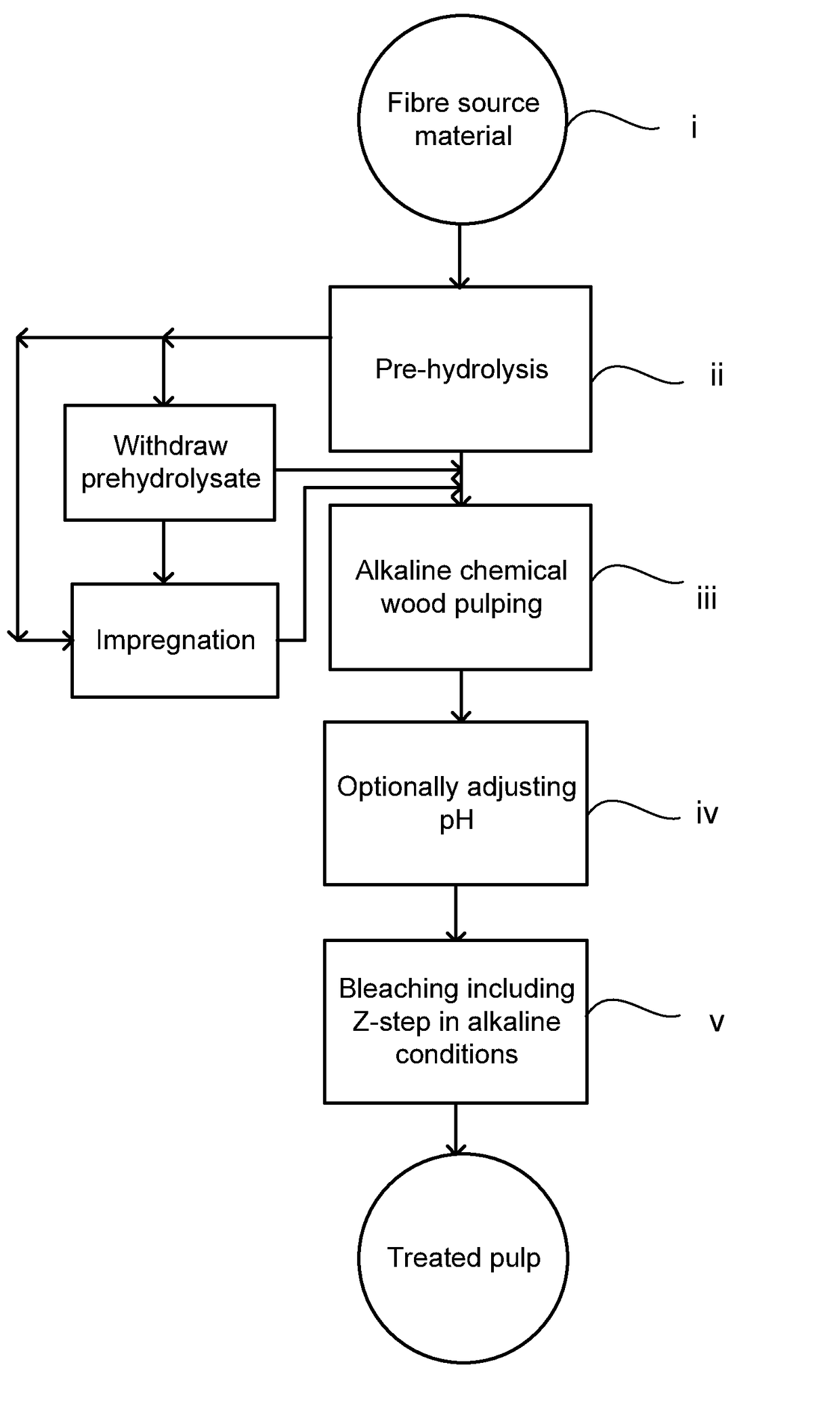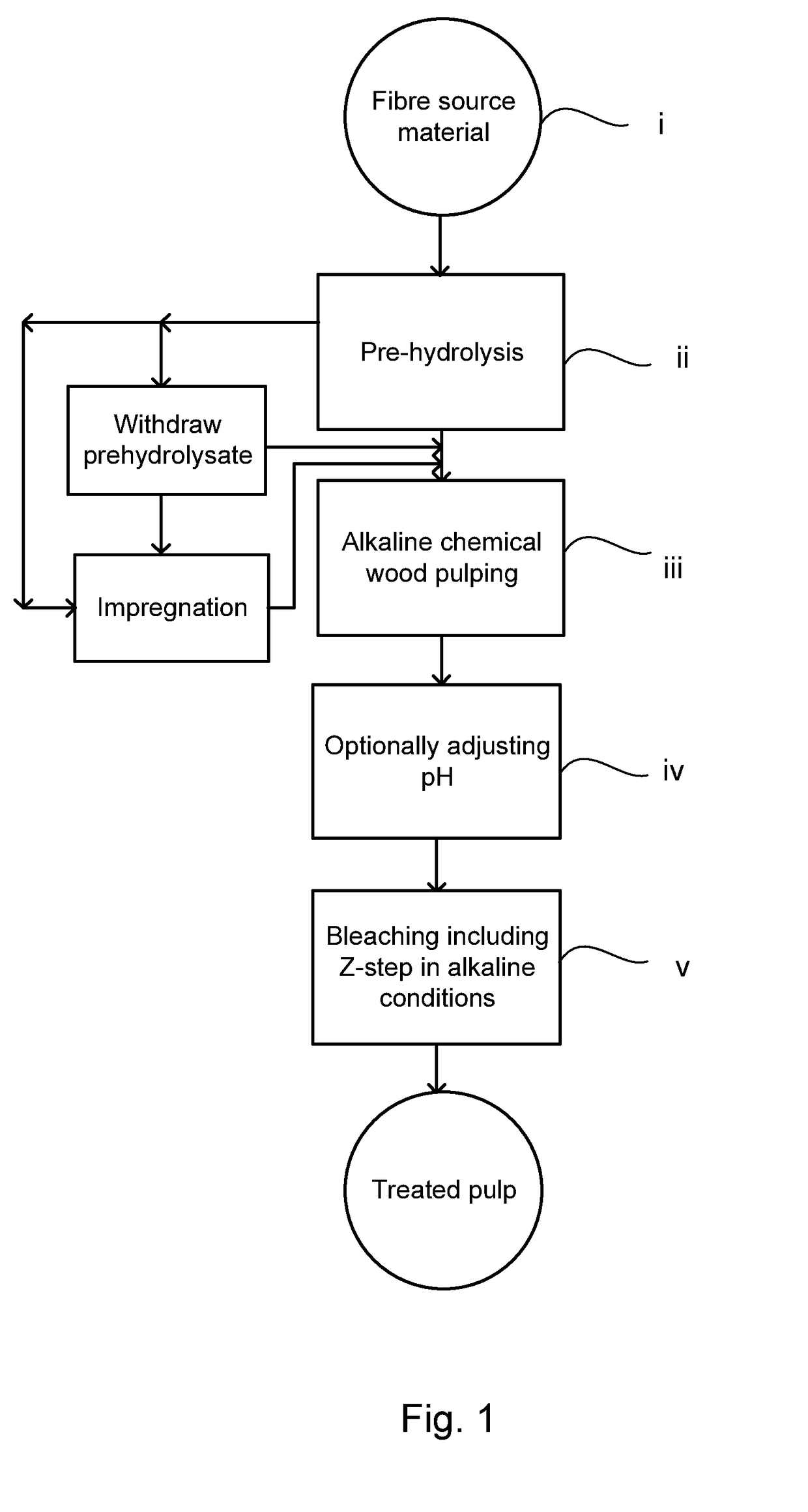Process for the production of a treated pulp, treated pulp, and textile fibres produced from the treated pulp
a technology of textile fibres and treated pulp, which is applied in the chemical characteristics of fibres, artificial filaments from viscose, cellulose solutions, etc., can solve the problems of low dissolving yield, low yield, and reduced process yield, so as to reduce the risk of lignin condensation
- Summary
- Abstract
- Description
- Claims
- Application Information
AI Technical Summary
Benefits of technology
Problems solved by technology
Method used
Image
Examples
examples
[0052]Fibre Source Material
[0053]Softwood, Scots pine (Pinus sylvestris) and Norway spruce (Picea abies), were chipped and screened separately. Accept fractions 2-8 mm thick were air-dried and hand sorted to remove chips with bark and knots. Raw materials were characterized separately and for each cook 50% of each raw material was charged to the digester. Chemical composition of softwood, spruce and pine used for pre-hydrolysis kraft cooking producing pulps for ozone treatment are shown in Table 1. By w % on wood is meant weight % in respect of the total weight of the analysed wood.
TABLE 1UnitPineSpruceSpruce / PineAcid-insoluble ligninw % on wood27.828.228.0Acid-soluble ligninw % on wood0.50.60.6Extractives*w % on wood1.91.11.5Ash contentw % on wood0.20.30.3Xylan% on wood9.17.88.4Glucomannan% on wood18.318.118.2Cellulose% on wood42.244.043.1
[0054]Pre-Hydrolysis Kraft Cooking
[0055]Pre-hydrolysis kraft cooking, i.e. pre-hydrolysis before kraft cooking, was performed in a forced circula...
PUM
| Property | Measurement | Unit |
|---|---|---|
| Temperature | aaaaa | aaaaa |
| Fraction | aaaaa | aaaaa |
| Fraction | aaaaa | aaaaa |
Abstract
Description
Claims
Application Information
 Login to View More
Login to View More - R&D
- Intellectual Property
- Life Sciences
- Materials
- Tech Scout
- Unparalleled Data Quality
- Higher Quality Content
- 60% Fewer Hallucinations
Browse by: Latest US Patents, China's latest patents, Technical Efficacy Thesaurus, Application Domain, Technology Topic, Popular Technical Reports.
© 2025 PatSnap. All rights reserved.Legal|Privacy policy|Modern Slavery Act Transparency Statement|Sitemap|About US| Contact US: help@patsnap.com


